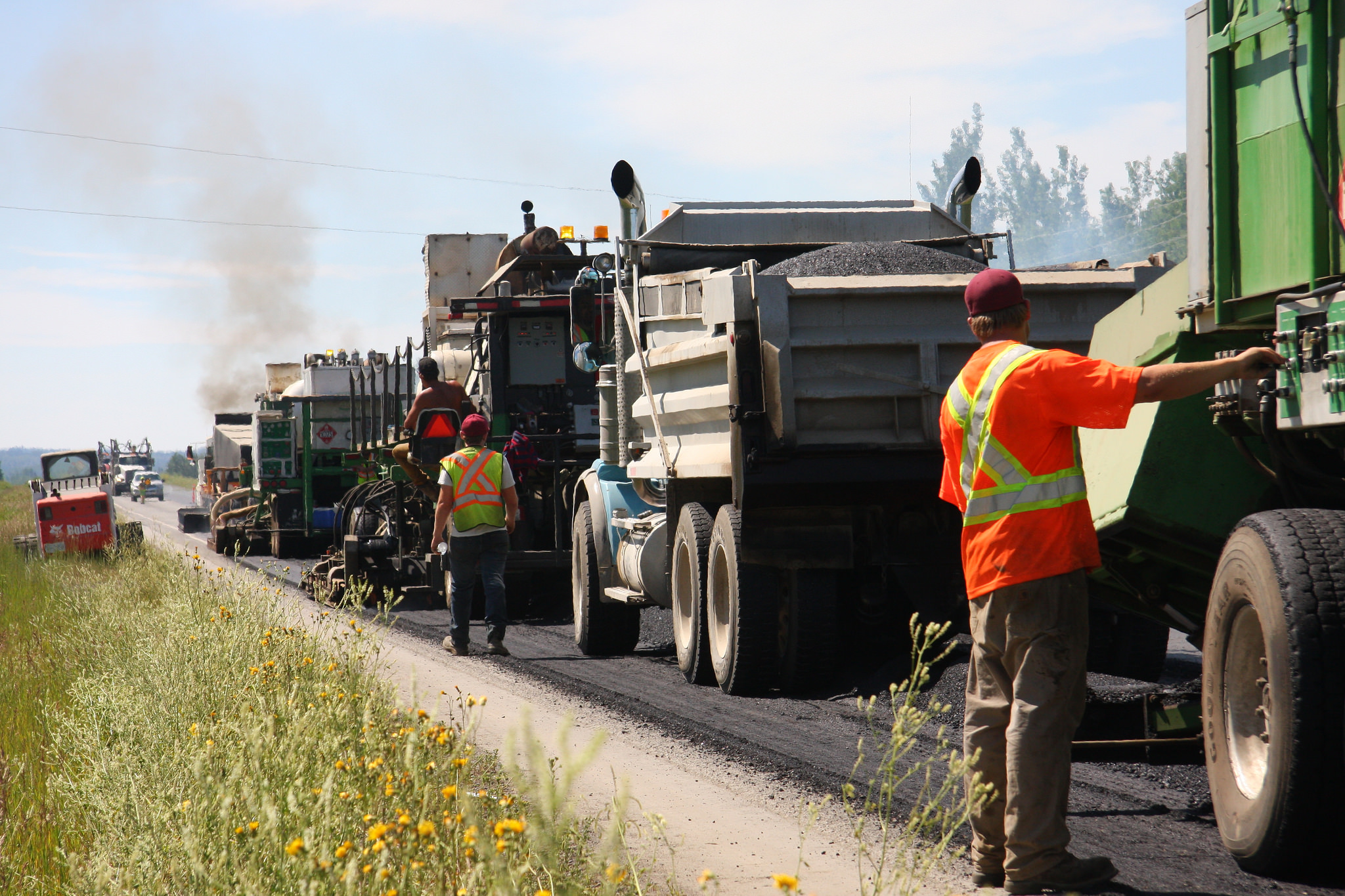
We all understand recycling is important. What many people don’t realize, however, is that we started doing it decades ago when we began recycling our roads. It’s a little more complicated than taking used household goods to the curb, but the principle is similar, and it allows us to reduce, reuse and be a little kinder to the environment.
There are a number of different ways we can recycle our roads. One way is to take up the old asphalt and carry it off to a plant, where it can be processed and used at a later date. Another technique is to recycle the pavement on site using a process called hot in-place recycling. This involves a train of different equipment (like you can see in the photo above). At the front of the train, the asphalt is heated and softened. As the train goes by, the old road surface is removed, mixed with a rejuvenator fluid and a small amount of new asphalt to bring the old road material back to life. It’s then put down again as a new layer of asphalt. This technique was invented in B.C. through innovative partnerships with industry.
Resurfacing roads this way is faster when compared to traditional paving, and it saves resources and lowers emissions. But it’s not something we can use all the time, because it only repairs the surface of the road. Sometimes the road base underneath the pavement is damaged and, if that’s the case, we need to use other techniques. Also, if the asphalt is too deteriorated, we need to use a different paving process to repair the road… but those are topics for other posts.
In the meantime, watch for hot in-place recycling happening in many places this year across the province and share your incredible paving knowledge with your travelling friends. They are sure to be amazed.
If you have any questions about this, or anything else the ministry does, let us know in the comments below.
Join the discussion